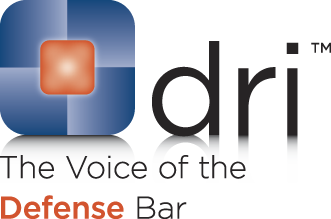Every motor vehicle registered in Nevada must have a minimum level of liability insurance, namely, $15,000 per person, $30,000 per occurrence and $10,000 for property damage. N.R.S. § 485.185. The Nevada Financial Responsibility law is meant to insure that individuals who are injured in motor vehicle accidents have a source of indemnification. Hartz v. Mitchell, 107 Nev. 893, 896, 822 P.2d 667, 669 (1991). The opinion of Alamo Rent-A-Car v. State Farm, 114 Nev. 154, 953 P2d 1074 (1998), which is discussed HERE, says that where a rental car is involved and no supplemental insurance is purchased, the renter’s personal auto insurance is primary to any coverage that the rental car company might offer. But what happens if the Plaintiff has injuries in excess of the renter’s personal auto policy? That is the question answered in the case of Salas v. Allstate Rent-A-Car, Inc. 116 Nev. 1165, 14 P.3d 511 (2000).
In Salas v. Allstate Rent-A-Car, Inc., Mr. Romeo rented a car from Allstate Rent-A-Car. He did not buy the supplemental liability coverage. Mr. Romeo’s personal policy through California State Automobile Association (CSAA) provided the minimum coverage limits of $15,000 per person, $30,000 per occurrence. Mr. Romeo’s rental car hit the rear of a car occupied by a driver and three passengers. CSAA’s $30,000 was split among them. As part of the settlement, the passengers Salas reserved their rights to pursue additional damages from Allstate Rent-A- Car.
The Salases filed an action against Allstate. At the hearing for summary judgment, the parties agreed that the Salas’s damages were of a value in excess of the amounts that they had already received. The only remaining question was whether the rental car company would be required to pay any amount beyond the $30,000 already paid by CSAA.
The Nevada Legislature granted rental car companies a “safe harbor” from suit. N.R.S. § 482.305(1) says that where the rental car company provides the minimum policy limit of $15,000 per person, $30,000 per occurrence, the company is not liable for damages arising from the negligence of the “short term lessee”. However, the law is a two edged sword. It goes on to say that if the minimum coverage is not provided, the rental car company is “jointly and severally liable with the short-term lessee for any damages caused by the negligence of the latter in operating the vehicle.”
Allstate argued, and the district court agreed, that where CSAA had paid its minimum coverage, the rental car company was protected by the “safe harbor” provisions. The district court said the law contemplated that the rental car company would pay where the driver had no insurance coverage. Otherwise, once the minimum coverage had been paid, the rental car company had no further obligation.
The Supreme Court disagreed with that argument. The court said that because the legislature passed a law requiring every vehicle and every driver to have insurance, while at the same time having a law that required the rental car company to have coverage, that the legislature must have intended that in some instances there would be “dual coverage”. Thus, the court concluded “that, by enacting a scheme that contemplates dual coverage, the legislature intended that both policies provide coverage up to the respective statutory minimums.” In other words, once the first level of coverage is exhausted, rental car companies could then be liable for coverage up to the minimum policy limits of $30,000 per occurrence a second time, depending on the amount of damages.
Allstate Rent-A-Car argued that the case of Alamo Rent-A-Car v. State Farm, 114 Nev. 154, 953 P2d 1074 (1998) should protect it from having to pay more than the minimum. However, in Alamo, the amount of the damages did not exceed the amount of available coverage. Thus, the Alamo opinion did not resolve the question of what would happen if the primary coverage was exhausted. Alamo decided only that the lessee’s personal insurance would pay first before any obligation by the lessor’s insurance would arise. The Court concluded that the rental car company my have to pu to an additional $30,000.00 in damages, the statutory minimum, depending on the damages proved.
In addition to this conclusion, the Supreme Court raised the stakes against the rental car companies. In footnote 2 of the Salas opinion, the Supreme Court warned:
We have resolved the issue of whether the short-term lessor of motor vehicles may be required to pay damages to those injured by a lessee of its vehicles when the injured parties have already been paid the statutory minimum by the lessee’s personal insurance. In future cases such as this, when the lessor refuses to insure or otherwise cover the lessee in the minimum statutory amounts or pay damages accordingly, the lessor may be subjecting itself to unlimited joint and several liability with its lessee pursuant to N.R.S. 482.305(1).
In light of this warning, rental car companies need to be extremely careful regarding any decision to deny coverage on either a personal injury or property damage claim based on an argument that that Nevada law was satisfied by payment of the policy limits of the driver’s personal insurance carrier. If a rental car company seeks to deny coverage under such circumstances, a coverage review or second opinion would be in order to minimize the risk of being responsible for “extra-contractual” damages.
For situations where the auto policy of the person renting the car is not enough to cover all the damages, see HERE.
 Follow
Follow Email
Email


